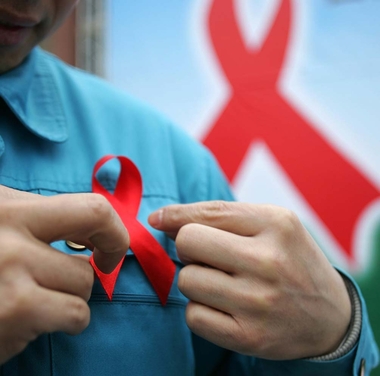NYC hits HIV/AIDS target two years ahead of schedule

New York City has surpassed a major goal against HIV/AIDS two years ahead of schedule, city officials announced Monday.
The target, originally set for 2020 by UNAIDS and known as 90-90-90, represents the percentage of people with HIV who know their status, who are on treatment and whose viral load is suppressed. New York officials said that, as of 2018, they have surpassed those numbers -- 93 percent of people with HIV have gotten a diagnosis, 90 percent are on treatment and 92 percent of those on treatment are virally suppressed.
London and Amsterdam were the first of UN's priority "Fast-Track Cities" to reach the 90-90-90 target, and a number of others around the world have since met all or part of that target. According to Monday's announcement, New York is the first "Fast-Track" city in the United States to do so.
"With more New Yorkers receiving treatment than ever, the day of zero diagnoses is closer than ever—something many believed unthinkable not so long ago," Mayor Bill de Blasio said in a statement Monday, the day after World AIDS Day.
Last month, the city's health department released its 2018 HIV Surveillance Annual Report showing that the number of new diagnoses fell below 2,000 -- the lowest since the city began annual HIV reporting in 2001.
In October, New York Gov. Andrew Cuomo's office announced that new HIV diagnoses in the state had dropped to a historic low -- 2,481 in 2018. On Sunday, Cuomo announced the number of new HIV infections had also fallen to a low of 2,019 cases in 2018, adding that the state is on track to end the AIDS epidemic there by the end of 2020.
New York City officials said Monday's announcement reflects strong community partnerships, access to preventive medications, investment in testing and treatment programs, and a history of advocacy by LGBTQ, public health and HIV/AIDS groups. Still, advocates say, with ongoing disparities, continued progress is necessary to ensure that these goals are attained across the board.
Globally, in 2018, there were 37.9 million people living with HIV, according to UNAIDS. Of them, 79 percent were aware of their status, 62 percent were getting treated and 53 percent had undetectable levels of the virus, which means they cannot transmit HIV sexually.
By Michael Nedelman, CNN via The-CNN-Wire™ & © 2019 Cable News Network, Inc., a WarnerMedia Company. All rights reserved.
The Gayly. 12/03/2019 @ 12:17 a.m. CST.





